ENCORE: REMEMBERING INDY'S 32-CAR TF FIELDS

Back in the days of push starts and dry hops, Top Fuel drivers didn't battle for one of 16 qualifying spots at the U.S. Nationals – it was
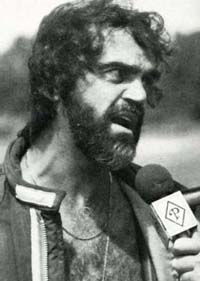
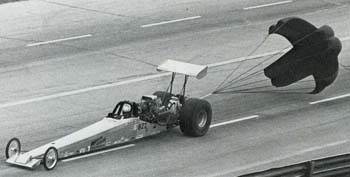
one of 32 spots. And it was just as hard to get in as it is now.
Great drivers routinely missed the cut. Tom McEwen, James Warren, Larry Dixon Sr., Frank Bradley, Gary Ormsby, and even future Indy winners Steve Carbone, Connie Kalitta, Dick LaHaie, and Terry Capp all failed to qualify at least once. As late as 1973, there were 41 alternates in Top Fuel – not 41 drivers for 32 spots. Seventy-three drivers attempted to qualify, more than three times as many are trying to get modern Indy fields.
There were no qualifying sessions. NHRA ran a set number of cars in each class in a never-ending rotation, and drivers got as many qualifying attempts a day as they could get back in line to make.
"You'd wake up four hours earlier for that race than for any other race," remembers Shirley Muldowney. "You'd fight and claw, do whatever you had to do, to get in the track and get into the lanes and up as close to that starting line as you could."
It was a tradition that lasted into the 1980s – barely. Capps won the rain-delayed 1980 race, the last 32-car Top Fuel field in U.S. Nationals (or NHRA) history, which helped launch the career of his crew chief, Bernie Fedderly, who would go on to win championships with Beck in Top Fuel and John Force in Funny Car.
"The cars would wind all the way around the corner, one after another," Fedderly said. "There was no real cutoff; it was arbitrary. So you'd just jack the car up right there in the lanes, put the jack stands under it, start working on it, then let it back down every time the line moved, pull forward a few spots, and jack it back up again."
Usually, the biggest names prevailed. For a 10-year period, from 1962 to 1971, either "Big Daddy" Don Garlits or Don "the Snake" Prudhomme was in the Indy Top Fuel final nine times – every year but 1966. Then, over the next decade, nearly half of the Indy Top Fuel winners were drivers who had never won another NHRA event: Gary Beck (1972), Marvin Graham (1974), Dennis Baca (1977), and Capp at the last one, in 1980. Running the second of chassis builder Al Swindahl's revolutionary new chassis that would sweep the sport over the next three years (Jerry Ruth had the first), Capp rattled off a string of 5.80s with his unpainted dragster for by far the biggest win of his career.
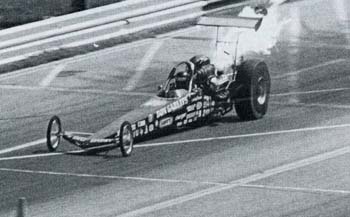
"We really felt like we hit the big time when Terry won Indy," Fedderly said. "About the only downside of it was that it rained Monday afternoon, and the final round wasn't run until Tuesday morning, so there were only about a thousand people in the stands. Then we got back to the pits, and somebody ripped had ripped off our pit bike while we were running the final and getting our picture taken in the winner's circle, but looking back, nobody seemed to mind too much. We just won Indy."
Capp, who today drives one of the faster cars in nostalgia Funny Car racing, qualified a distant second behind Graham that year with a 5.80 – well behind Graham's incredible 5.68, the best run anywhere since 1975. No one else ran even in the 5.70s all weekend, but Capp was in the .80s in four of five rounds of eliminations and personally took out the next three NHRA world champs – Muldowney (1980 and 1982), Jeb Allen (1981), and Beck (1983), making his best run of the long weekend, a 5.82, in the final against Allen's close 5.89.
The next year, reaction timers were introduced to the sport, Modified Eliminator was eliminated as an NHRA category, and the Indy Top Fuel field was reduced from 32 to its present size, 16 cars. "You hated to

see it happen, but the handwriting was on the wall – those cars cost a lot of money to run even back then," said Muldowney, who would defeat Kalitta for the 1982 Indy title.
Nothing will ever replace that 1982 event, one often called the race of the decade, for Muldowney, but for her, the 1975 race comes close. She had beaten Chevy hero Jim Bucher, who had won his first NHRA title six weeks earlier at the Summernationals in Englishtown, in round one. Texan Frank Holden went down in round two. And in round three – just the quarterfinals in those 32-car fields, not the semi's – she put away Beck, the reigning NHRA world champion and 1972 and 1973 Indy winner, for the biggest round-win of her career to that point.
After beating Capp in the semifinals, she climbed from her car to hear Garlits, who had just beaten Pittsburgh veteran Ted Wolf in the other semifinal matchup, exclaim, as only he could have, "Oh my God, there's a wooooooooman in the final at Indy!"
Garlits had run low e.t. for four rounds in a row, but Muldowney, who had reached her first final earlier that summer at the Springnationals and would break through for her first NHRA title at the 1976 Springnationals, had a legitimate shot at knocking him off. She qualified a strong fifth, had the second- or third-quickest run of most rounds, and, though there were no reaction times back then to prove it, was getting stronger on the line as the rounds wore on.
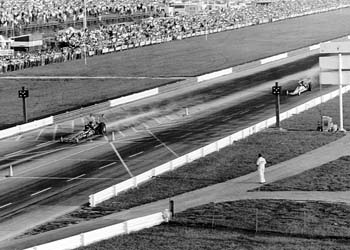
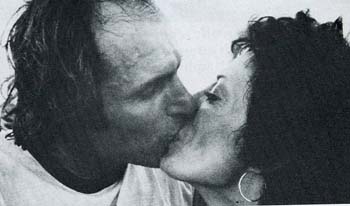
"I was ready," Muldowney said. "I remember exactly how I was feeling that day. We'd already won so many rounds, and I was thinking, 'I can do this. This is what I was meant to do.' Then the car dog-tracked on the burnout in the final – that started the whole thing. They're pushing me back – there were no reversers back then – and Ronnie Capps [not to be confused with Terry Capp or current Funny Car driver Ron Capps], who wasn't even on my crew yet, comes out of nowhere and keeps motioning me farther and farther to the left. [Crew chief] Connie [Kalitta] didn't want me to, but Ronnie was in front of the car, the one I could see. He's got me going left, left, left, following the left tire track from the burnout. I didn't want to, but I was like, 'Well, OK then.' So I ended up lined up way out of the groove."
For the fourth of his Top Fuel record eight U.S. Nationals titles, Garlits sped to a steady 5.93, low e.t. for the fourth round in a row, but his slowest run since the opening round. Muldowney shook the tires, lifted, corrected, and got back in the throttle for a few hundred feet for a disappointing 6.44, 191 loss.
"It took a left right off the starting line, and I was out of it," Muldowney said. "I could have won. I was so pissed. I could have killed that Ronnie Capps – he cost me Indy, as far as I'm concerned. I'm not saying I absolutely would have won, because Garlits was running good that weekend, but I could have. I was right there all day on the line starting line. Get me pissed off, and my reaction times get better – I was that way my whole career. Right before Indy, I'd read this press release from the NHRA media department, something about me 'starting to believe my press clippings,' I guess because we'd got to the final at Columbus. That really motivated me.
"I'll always remember that race," said Muldowney, who, just seven years later, would be a three-time NHRA world champion. "It was Indy. It was huge. It was one of the best days of my career, one of the really great days. Then the next morning, I'm coming out of my hotel room, and there's this little calling card left under my windshield wiper. "It said, 'You did a great job, Big Daddy.' I still have it."








































